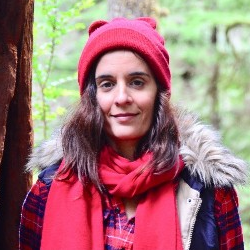Fire and Forest Management: Impacts, Trade-offs and Interactions
A special issue of Forests (ISSN 1999-4907). This special issue belongs to the section "Forest Ecology and Management".
Deadline for manuscript submissions: closed (20 March 2019)
Special Issue Editors
Interests: wildfire risk governance; socioeconomic and ecological tradeoffs in forest restoration programs; network analysis of wildfire risk transmission; landscape scenario modeling
Interests: wildfire ecology; wildfire modeling; forest landscape models; coupled human-natural systems; forest and fire management and policy
Interests: wildland fire; fire behaviour; fire ecology; fire management
Special Issue Information
Dear Colleagues,
Fire is an integral part of the disturbance ecology in forest ecosystems across the world and in recent decades has dramatically altered the composition and structure of many forested landscapes. Wildland fires are a growing challenge to landscape and fire managers tasked with preserving biodiversity and generating multiple ecosystem services in fire-prone areas. While forest management activities, and the lack thereof, can potentially alter fire regimes in terms of fire frequency and severity, the stochastic nature of wildfire difficults the estimation of how forest management and fire feedbacks interact over long periods of time. Understanding how management activities can modify fire behavior and sustain forest ecosystem services over time, under a changing climate are key requirements of forest management plans. In this Special Issue, we welcome studies that address temporal fire dynamics under alternative forest management regimes. Of particular interest are studies that examine the competitive interaction between forest management and fire feedbacks and how those interactions might alter the impact of fire on ecosystem services and forest resilience. Studies are welcome that address these topics at a range of scales in both natural and plantation forest systems based either on empirical or simulated data.
Dr. Alan Ager
Dr. Ana M.G. Barros
Prof. Paulo M. Fernandes
Dr. José Ramón González Olabarria
Guest Editors
Manuscript Submission Information
Manuscripts should be submitted online at www.mdpi.com by registering and logging in to this website. Once you are registered, click here to go to the submission form. Manuscripts can be submitted until the deadline. All submissions that pass pre-check are peer-reviewed. Accepted papers will be published continuously in the journal (as soon as accepted) and will be listed together on the special issue website. Research articles, review articles as well as short communications are invited. For planned papers, a title and short abstract (about 100 words) can be sent to the Editorial Office for announcement on this website.
Submitted manuscripts should not have been published previously, nor be under consideration for publication elsewhere (except conference proceedings papers). All manuscripts are thoroughly refereed through a single-blind peer-review process. A guide for authors and other relevant information for submission of manuscripts is available on the Instructions for Authors page. Forests is an international peer-reviewed open access monthly journal published by MDPI.
Please visit the Instructions for Authors page before submitting a manuscript. The Article Processing Charge (APC) for publication in this open access journal is 2600 CHF (Swiss Francs). Submitted papers should be well formatted and use good English. Authors may use MDPI's English editing service prior to publication or during author revisions.
Keywords
- Forest management
- Fire regime
- Fire impact
- Ecosystem services








